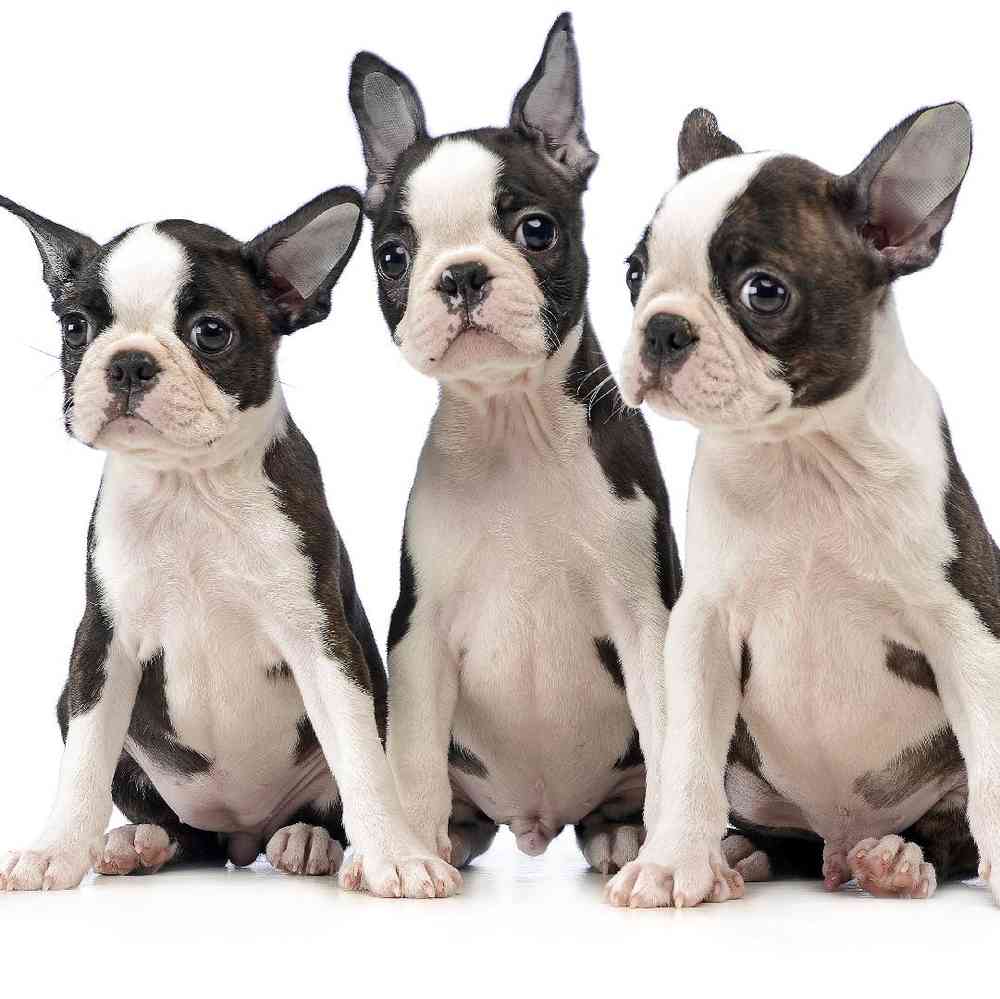
The Boston Terrier is a lively little companion recognized by his tight tuxedo jacket, sporty but compact body, and the friendly glow in his big, round eyes. His impeccable manners have earned him the nickname “The American Gentleman.”




American Canine Association Continental Kennel Club Universal Kennel Club International American Kennel Club United All Breed Registry America's Pet Registry, Inc. United Kennel Club (Based on breed recognition. See store for details on this particular puppy.)
Boston Terriers are compact, short-tailed, well-balanced little dogs weighing no more than 25 pounds. The stylish “tuxedo” coat can be white and either black, brindle, or seal (dark brown). The head is square, the muzzle is short, and the large, round eyes can shine with kindness, curiosity, or mischief. Ever alert to their surroundings, Bostons move with a jaunty, rhythmic step. It’s a safe bet that a breed named for a city—the or , for instance—will make an excellent urban pet. Bostons are no exception: they are sturdy but portable, people-oriented, and always up for a brisk walk to the park or outdoor cafe. A bright dog with a natural gift for comedy, the dapper Bostonian is a steady source of smiles.
The Boston Terrier is a lively, highly intelligent, smooth coated, shortheaded, compactly built, short-tailed, well balanced dog, brindle, seal or black in color and evenly marked with white. The head is in proportion to the size of the dog and the expression indicates a high degree of intelligence. The body is rather short and well knit, the limbs strong and neatly turned, the tail is short and no feature is so prominent that the dog appears badly proportioned. The dog conveys an impression of determination, strength and activity, with style of a high order; carriage easy and graceful. A proportionate combination of "Color and White Markings" is a particularly distinctive feature of a representative specimen. "Balance, Expression, Color and White Markings" should be given particular consideration in determining the relative value of General Appearance to other points.
The Boston Terrier is called "the American Gentleman" because of his debonair appearance In 1979 the Boston Terrier was named the "state dog" in Massachusetts. President Warren Harding had a Boston Terrier named "Hub" and President Gerald Ford had two Boston Terriers, "Spot and Fleck"